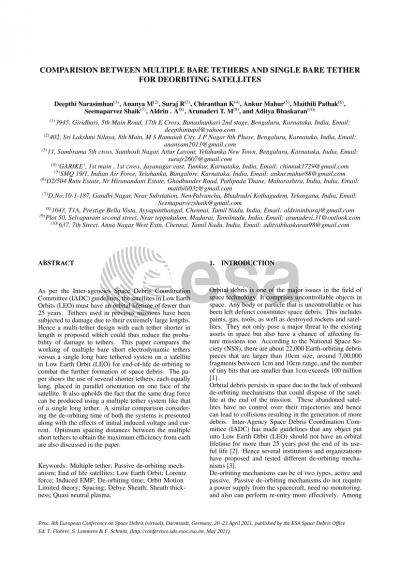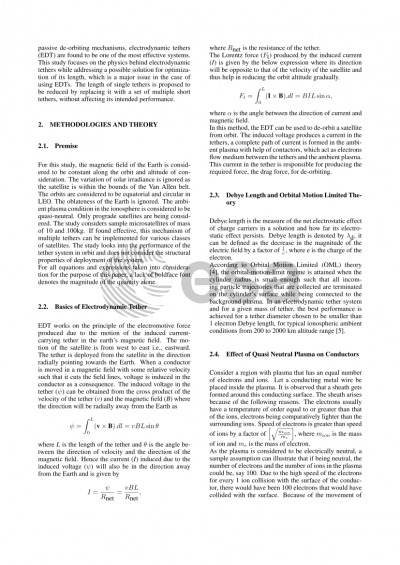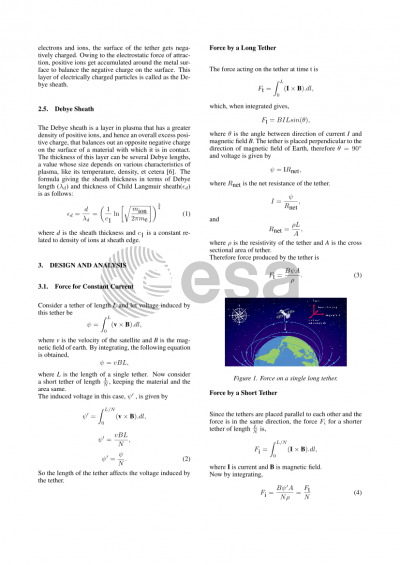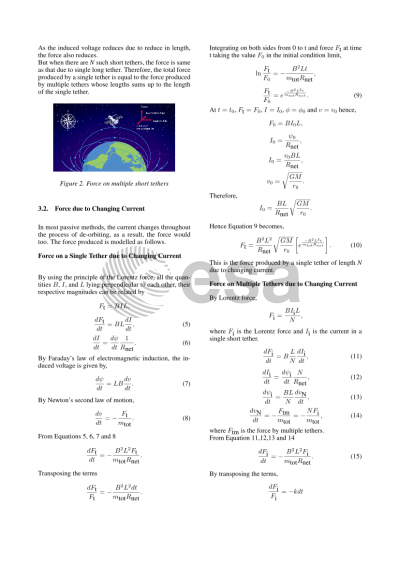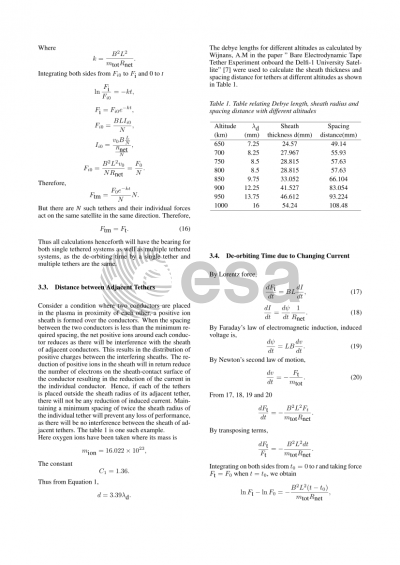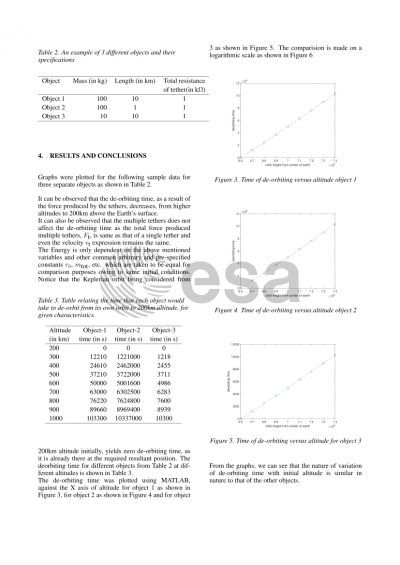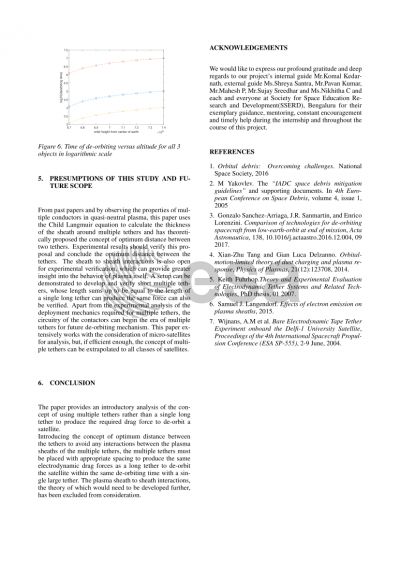Document details

Abstract
As per the Inter-agencies Space Debris Coordination Committee (IADC) guidelines, the satellites in Low Earth Orbits (LEO) must have an orbital lifetime of fewer than 25 years. Tethers used in previous missions have been subjected to damage due to their extremely large lengths. Hence a multi-tether design with each tether shorter in length is proposed which could thus reduce the probability of damage to tethers. This paper compares the working of multiple bare short electro-dynamic tethers versus a single long bare tethered system on a satellite in Low Earth Orbit (LEO) for end of life de-orbiting to combat the further formation of space debris. The paper shows the use of several shorter tethers, each equally long, placed in parallel orientation on one face of the satellite. It also upholds the fact that the same drag force can be produced using a multiple tether system as that of a single long tether. A similar comparison considering the de-orbiting time of both the systems are presented along with the effects of initial induced voltage and current. Optimum spacing distances between the multiple short tethers to obtain the maximum efficiency from each are also discussed in the paper.
Preview
